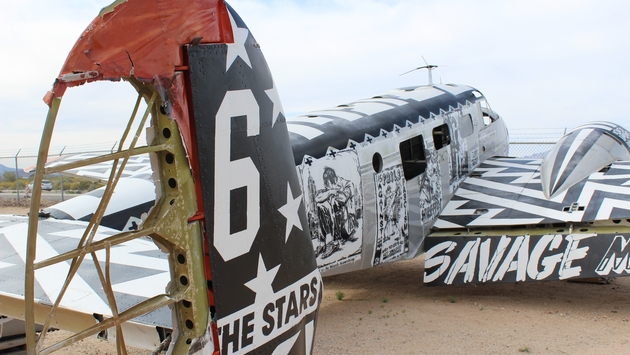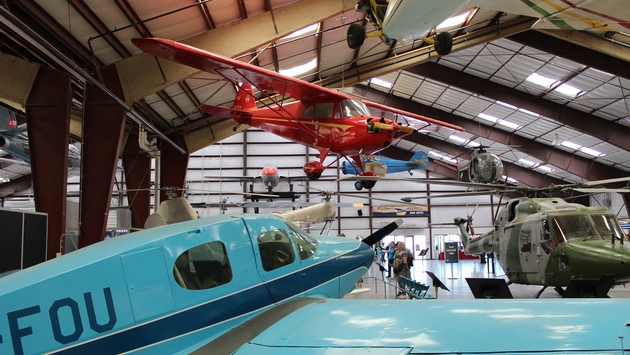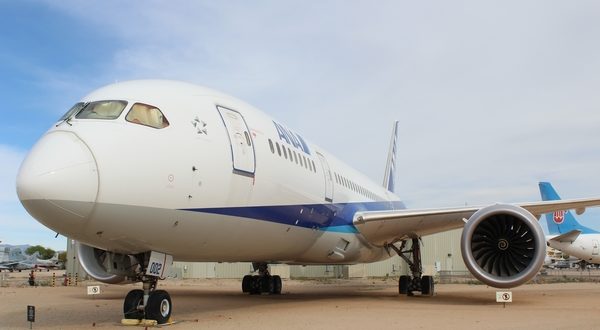[ad_1]
Sometimes you see a photo of a place and it immediately moves to the top of your bucket list. That’s how I felt about the airplane “boneyard,” officially known as the 309th Aerospace Maintenance and Regeneration Group (AMARG) facility, in Tucson, Arizona.
It’s the largest aircraft storage site in the world, with nearly 4,000 relics of the past strewn across approximately 4.5 square miles of desert landscape at Davis-Monthan Air Force Base. It feels apocalyptic and yet hauntingly beautiful. There’s just something so striking about abandoned structures.
However, referring to the boneyard as fields of abandoned aircraft is an extreme oversimplification and simply not true. The facility serves as so much more than a graveyard of aircraft of yore. Planes are often reclaimed for individual parts to help maintain active aircraft. “People hear boneyard and think it’s where aircraft go to die, but that’s not the case,” said our AMARG tour guide Myron Marsh.
Visiting the boneyard is a bit of a process. Even though it’s on U.S. Air Force real estate, its tours are booked and operated by the nearby, privately-owned Pima Air & Space Museum. While the place makes for a fascinating tour; unfortunately, visitors are not allowed off the tour bus.
The real surprise of the day was the Pima Museum itself. It’s one of the world’s largest non-government-funded aerospace museums and showcases 300 aircraft on more than 80 acres, with half of the planes outdoors. The best part? No advanced booking is required and visitors have free reign to get as close as possible and even touch each aircraft. The internet vastly underestimated this museum’s coolness factor.
While I initially considered the museum to merely be a gateway to the AMARG tour, visiting was by far the biggest treat of the day. Walking around Pima’s own version of a boneyard is to revisit the entire aviation history of the United States.
Pima displays aircraft from all branches of the military and other government agencies, even some foreign aircraft. Each airplane tells a story, weaved into our country’s heritage. The necessity for the boneyard and the museum arose after World War II when there were so many wartime aircraft that needed to be stored, like 400 Boeing B-29 Superfortresses and 300 Douglas C-47 Skytrains.

The star of the aircraft inside the museum is undoubtedly the Lockheed SR-71A Blackbird. Developed in the early 1960s, it’s one of the world’s most recognizable aircraft. It was way ahead of its time: it still holds world speed and altitude records and is the only manned, jet-powered aircraft to routinely exceed Mach 3.
Even though SR-71s are on display at 29 locations around the U.S. and the U.K., this was my first time seeing one and it was awe-inspiring. Its scale was so massive that I couldn’t even capture the entire aircraft in one frame. The Blackbird was retired from U.S. Air Force service in 1990 and Pima obtained the second SR-71 ever built. It’s the oldest Blackbird survivor.

As for the outside, my favorite was perhaps the 787 Dreamliner that Boeing gifted the museum. Seeing that aircraft at Pima was especially impressive because it took its first flight less than a decade ago. It’s so rare to have such unprecedented access to such a wide variety of aircraft, set against the beautiful desert of Tucson. The sprawling city’s high altitude, low humidity, alkaline soil and lack of rainfall make for ideal conditions for displaying aircraft.
The commercial space industry has given rise to a spike in aviation tourism but let’s not forget about all the incredible aviation museums around the U.S. The Pima Air & Space Museum gifted me with an even greater appreciation for aviation. It quickly took the top spot as the best aviation museum that I’ve ever seen. Plan your own visit at pimaair.org. Travel tip: be willing to commit at least four hours of your time.
[ad_2]
You can read more of the news on source
 Travelsmart
Travelsmart



